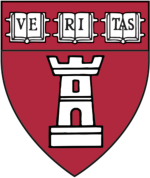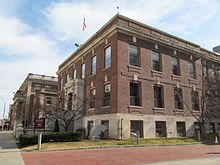HARDVARD SCHOOL OF DENDAL MEDICINE,
WORLD`S FIRST DENTIST UNIVERSITY
OPENED ON 1867 JULY 17
The Harvard School of Dental Medicine (HSDM) is the dental school of Harvard University. It is located in the Longwood Medical Area in Boston, Massachusetts, United States. In addition to the DMD degree, HSDM offers specialty training programs, advanced training programs, a Ph.D. program through the Harvard Graduate School of Arts and Sciences, and Master of Medical Sciences & Doctor of Medical Sciences degrees through Harvard Medical School. Being highly selective, admission into the pre-doctoral DMD program, as well as into the post-doctoral residency programs, is fiercely competitive. At its heart, the program considers dentistry a specialty of medicine. Therefore, all students at HSDM experience dual citizenship in both Harvard School of Dental Medicine and Harvard Medical School.
Today, HSDM is the smallest school at Harvard University. With a total student body of 280, including pre-doctoral and post-doctoral students spread over several disciplines, HSDM is an intimate community of students and faculty. Even when compared to other dental schools, HSDM is small, and its total living alumni number is approximately 2,500 worldwide and continues to have considerable influence on dental education and research within the broader oral health community. Many other HSDM alumni pursue careers as full-time faculty members, department heads, and leaders of organized dentistry.
| Harvard School of Dental Medicine | |
|---|---|

Coat of arms of the School
| |
| Former names | Harvard Dental School |
| Established | July 17, 1867 |
| Type | Dental school |
| Parent institution | Harvard University |
| Location | Boston, Massachusetts, United States |
| Dean | Bruce Donoff |
| Doctoral students | 280 |
| Alumni | 2,300 |
| Website | hsdm |
First university-based dental school[edit]
In the early 19th century a dentist was culturally understood as a tradesman, as opposed to a professional in the medical sense. Most dentists had either learned their trade through apprenticeships or simply offered their services to the public as self-proclaimed experts.
Even physicians and surgeons had once been tradesmen; for example, in the Middle Ages, many barbers were also surgeons by trade.[1]The advent of science was a principal factor in the professionalization of medicine and surgery, because as scientific knowledge of biology, chemistry, and physiology advanced, it became necessary to be educated academically in order to master the full body of knowledge in medicine; as medicine changed from an art to a mixture of applied science and art, it became something qualitatively different from the folk medicine or traditional medicine that it had earlier been.
A similar evolution happened in dentistry, as dentists today are required to understand a large amount of oral medicine to earn license to practice. The move toward more formal dental education and the professionalization of dentistry in the United States began when the state of Maryland chartered the Baltimore College of Dental Surgery in 1840. The establishment of this independent college, which may have occurred after the University of Maryland refused to add dental education to its curriculum, exemplified the nineteenth-century debate over whether dentistry should be part of scholarly education or should be taught in separate trade schools.[2] As a result of this resistance, the various American dental schools that existed by 1866 were all freestanding (not university-affiliated).
They included the aforementioned Baltimore College of Dental Surgery (1840), the Ohio College of Dental Surgery (1845), the Philadelphia College of Dental Surgery (1852), the New York College of Dentistry (1852), the Philadelphia Dental College (1863), and the Missouri Dental College (1866).
The move towards university-based dental education institutions (as they exist today) began with the formation of Harvard Dental School in 1867. Dr. Reidar Fauske Sognnaes, noted oral pathologist and founding dean of the UCLA School of Dentistry, commented on the significance of the school's formation in a 1977 New England Journal of Medicinearticle:

No comments:
Post a Comment